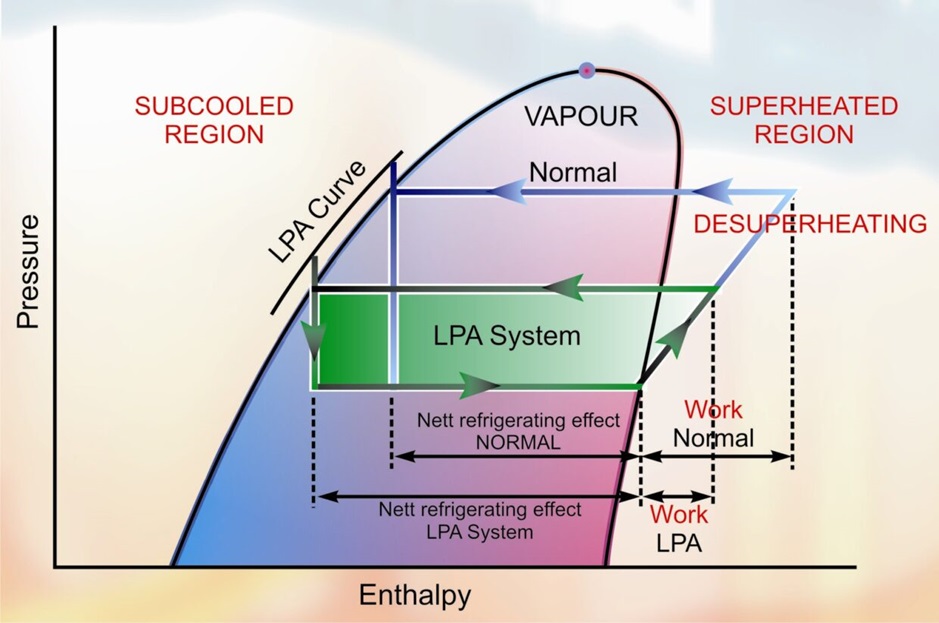what is liquid pressure amplification LPA?
The application of Liquid Pressure Amplification (LPA) to a refrigeration or air conditioning system provides the means by which a considerable reduction in Compressor Discharge Pressure can be permitted. Liquid Pressure Amplification (LPA) is achieved by an semi hermetically sealed, magnetically driven liquid refrigerant pump which is installed in the Liquid Line from the condenser (or Receiver) and thus sits between the Condensing and Evaporative phases. By overcoming the Liquid Line Pressure Drop, Flash Vapour can be completely eliminated.
LPA Pressure Enthalpy Chart

Moreover, lower Compressor Discharge Pressures can then offset this elevation of the Liquid Line Pressure. Improvements in Refrigeration System Efficiency of up to 50% are achievable according to operating conditions. Annual improvements of 20%-40% are more normal due to the limits on savings during the warmer months.
It is well documented that reduced Compressor Discharge Pressures and the corresponding reduction of compression ratios in a refrigeration cycle are desirable in that reduced energy consumption and increased system life are the result. These provide reduced operating costs and increased equipment life cycle. However, a problem then arises in that as Compressor Discharge Pressure is decreased, flash vapor (the partial re-evaporation of liquid refrigerant which has been condensed) in the system liquid line (and receiver if fitted) increases. Any occurrence of Flash Vapor in a refrigeration or air conditioning system will result in a direct loss of refrigeration capacity within the Evaporator. The resulting increase in running time alone to meet the refrigeration load will lead to increased energy consumption and the refrigeration system therefore becomes less efficient.